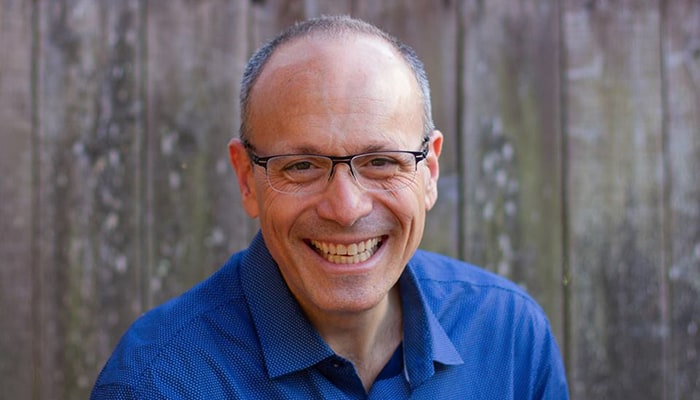Blog: Mindful Leadership: An Interview with Hal Adler
Hal Adler is a certified Depth Hypnosis Practitioner and Executive Coach. In this interview, Hal talks about his upcoming Mindful Leadership workshop at the Sacred Stream Center, and why mindfulness is an essential practice for anyone in a leadership position.
Q: What is mindful leadership?
Hal: Mindful leadership is a practice that allows leaders to recognize what it means to be aligned to their highest and best good, and to understand the place where their personal alignment can resonate with and support what’s in the highest and best good of an organization and its people. Leading mindfully is a skill set that can be developed over time.
Q: Who is the Mindful Leadership workshop designed for?
Hal: The workshop is designed to be helpful for anyone who has a position of leadership in their life, in any capacity. You could be running a family, teach Sunday school, lead a Girl Scout troop, or be in one of hundreds of other positions of leadership.
The workshop will especially benefit people leading teams, and it applies most directly to leaders working inside organizations. Those organizations can be any shape, size or structure— not-for-profit, for-profit, a thousand people, one hundred thousand people, and in any industry.
Q: Why is it important to bring mindfulness into leadership?
Hal: We get tossed around inside of our organizations. The workplace can be very tumultuous, highly volatile, and constantly changing— not just week-to-week or month-to-month, but day-to-day and meeting-to-meeting. It is stacked with unexpected changes, which can be tiny or system-wide. While we like to think of work as a place that can bring the best out of people, it can actually do the opposite. It can bring out insecurities, jealousy, unhealthy competition, and anxiety. Mindfulness allows us to recognize when we are in alignment, what it feels like when we’re out of alignment, and most importantly, what tools we can apply in the moment to regain alignment.
I sometimes think about the workplace as a Petri dish for suffering. Of course work can be satisfying, fun and incredibly rewarding. But when we’re not mindful and present as we interact with others, all of that tumult can take us into a place of emotional volatility. Mindfulness creates an opportunity to be thoughtful about what you’re saying and how you’re saying it, how you’re listening and interpreting and how you are separating what you’re hearing from your own triggers.
That’s what happens a lot at work— we hear things that trigger us, and we start responding from a place of reactivity. Our fears and vulnerabilities are triggered, and it can be hard to recognize when we’re saying things from a place of reactivity instead of being clear and intentional. Then the person you’re talking with can take their turn to respond “unmindfully” or out of reactivity, which then triggers you further.
At work, that can happen ten times a day. Or, we can be mindful and understand what it means to be in connection with our highest and best good and move through the day with that kind of clarity. All the energy that gets wasted in reactive situations could instead be channeled toward positive and productive things.
From an organizational perspective, it’s hugely beneficial for people to be in relationship with one another in a mindful way because focus, attention and energy are directed towards productivity. From an individual perspective, it just feels better.
Q: In the workplace, how can you use mindfulness as a tool to be less reactive in your communications with others?
Hal: A tool you can use to practice responding instead of reacting is to notice any places where you have strong feelings, as well as noticing the strong feelings of others. As you notice these triggers and reactions, do your best to hold all that is happening compassionately and kindly. Notice that what the person said or how they said it may have evoked a vulnerable response in you, and just be aware of this. The awareness itself shines a light on the vulnerability and gives it space. Giving it space can often be enough to not be hijacked by any emotion you may be feeling.
Mindfulness is a skill set that you can develop, but you do need to work to develop it. It’s not a notion you can just intellectualize and therefore internalize and use every moment. It is something you have to practice. When you are in a situation at work where someone comes at you in person, or even over email/voicemail, it is easy to react. The reaction could be a snarky remark, a raised voice, a shut down or something else. With the tools of mindfulness, instead of reacting in an unhelpful way, you can learn to respond in a way that is helpful and of service to all involved.
If what’s coming at you evokes a fearful or panic response in you, with mindfulness you may be able to recognize and name that panic or fear so you have the capacity to respond without being consumed by your emotional reaction. I think a primary part of the practice is to create space for it all to happen. When we react, we react from a constricted place, and when we are constricted, the space we have to respond from is very small. But if we can remain open, we can remain calm. It literally can create a larger space of containment from which you can be more thoughtful and deliberate. We’re talking about this in a work context, but it’s actually the same practice with any relationship you have. It’s a practice you can embrace when you are working to be less reactive to anything or any person.
Q: What is one mindfulness practice you feel is essential for people in leadership positions?
Hal: I think the ability to reset is an incredibly important practice in general. Having a meditation practice in the morning to align to intentionality and taking brief meditative moments to return back to that place of clarity throughout the day is very important. These mindful moments might be noticing your breath for thirty seconds, taking a mindful walk, getting fresh air, reconnecting to nature, or closing your eyes when possible. Setting your intention at the start of the day and making time to reset throughout the day is an essential practice.
For people who say they have no time, one way to think about this is to think about the times of transition throughout your day as your reset times. Even if you have fifteen meetings in a day, there is a transition time between all of them. If you’re in an office environment where you’re moving from meeting to meeting, it’s that walk in the hall, to the elevator, or that quick run up the stairs that are your transition times.
Q: What message do you want students to take away from this workshop?
Hal: One important message for leaders to take away is that it is necessary to tune in to their own needs as well as the needs of others around them. The role of the leader in most environments is no longer simply a matter of their individual contribution and how much they can give to the company, but rather to focus on how they can support their people in contributing to the organization. It’s not about how great the leader is at what they do, it’s about how they can create a culture where every person can be their best. They let go of the idea that their individual goal is most important and think inclusively about how they can help others.
However, sometimes what happens is that leaders who are focusing externally forget that all of the power and wisdom they can offer comes from an internal source. One thing leaders can suffer from is a reluctance to focus inwardly, because they’ve been asked to focus outwardly and they know they are being held accountable by achieving results. That’s all true, but to be aligned to your own highest good requires an internal focus and a conversation with inner wisdom.
The message I hope people leave with is that being a mindful leader requires a balance between internal and external focus. It isn’t selfish or narcissistic to focus inwardly— it’s absolutely necessary.
ENJOYING THE STREAM OF CONSCIOUSNESS BLOG? SIGN UP FOR FREE UPDATES!



